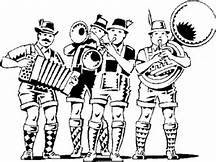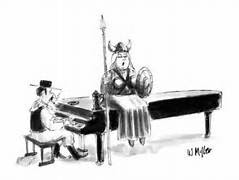Announcing a new volume to be available soon:
Here is an excerpt from the introduction:
In this volume we consider the technical means by which a happy collaboration between the hands becomes second nature. In my experience, if there is an impediment to a successful performance, that impediment originates in the left hand. If the fingering and its technical logic are not well understood, the right-hand fioriture have no place to take root, and more often than not die on the vine. If you will pardon a metaphor shift, when the coat-hanger is shapeless and weak, the garment has nothing to cling to.
Recently, a student brought the Nocturne Op. 9, No. 2, that expressive and, well, ubiquitous exercise that all students seem to take up and all teachers must endure. If there is fault, it is of course not with the work itself, but rather with the approach to it. My student complained of confusion as to where to place all of those “extra” notes, the ones that don’t really have rhythmic specificity. I responded, cipher that I am, that the right hand is confused because the left hand jabs aimlessly at notes in what I call a hunt-and-peck manner. (Those readers old enough to remember manual typewriters will identify with that description.) The left hand hasn’t discovered its path. It doesn’t know how to group those chords or where the bass notes belong. It, therefore, hasn’t learned to use each eighth as a direct spring-board for each succeeding eighth. This is what I mean when I say notes must proceed easily and naturally from one to the next, as if each propelled the other inevitably. When the first bass-note sounds, the hand must already know its next landing place. You wouldn’t jump off a diving board without first looking to see if there is water in the pool.
Chopin advised that in this nocturne, in order to avoid sounding
like a waltz or worse—an Austrian oom-pah band, the “bass be practiced first by itself, divided between the two hands; and each of the chords following the main bass beats in the 12/8 should sound like a chorus of guitars…This should be done piano and in a strict time, maintaining an absolutely steady allegretto without the 12/8 lapsing into triplets.” This is not a bad idea, and I blush at my impertinence. But the master stops short of telling his student the technical how-tos and where-fors. In this example, as in virtually all of the examples we shall examine, the technical solutions tend to be variations on similar ideas having to do with grouping notes together for ease and selecting fingering that allows the hand to move fluently, without feeling overly extended.
Once the accompanist left-hand knows its job well, we shall
introduce it to the singing right-hand. It is at this point we find ways to accommodate the seemingly arbitrary fioriture, the melodic embellishments that distinguish Chopin from all other masters of concert music for the piano. We learn how to manage an accompaniment figure that seems to tease the hand into awkward stretches. We explore ways of organizing melismas of 27 notes against 6. We learn how to interpret all those dangling grace-notes, wantonly attached to arpeggiated figures, not to mention all those other enigmatic symbols.
Here is an excerpt from the introduction:
In this volume we consider the technical means by which a happy collaboration between the hands becomes second nature. In my experience, if there is an impediment to a successful performance, that impediment originates in the left hand. If the fingering and its technical logic are not well understood, the right-hand fioriture have no place to take root, and more often than not die on the vine. If you will pardon a metaphor shift, when the coat-hanger is shapeless and weak, the garment has nothing to cling to.
Recently, a student brought the Nocturne Op. 9, No. 2, that expressive and, well, ubiquitous exercise that all students seem to take up and all teachers must endure. If there is fault, it is of course not with the work itself, but rather with the approach to it. My student complained of confusion as to where to place all of those “extra” notes, the ones that don’t really have rhythmic specificity. I responded, cipher that I am, that the right hand is confused because the left hand jabs aimlessly at notes in what I call a hunt-and-peck manner. (Those readers old enough to remember manual typewriters will identify with that description.) The left hand hasn’t discovered its path. It doesn’t know how to group those chords or where the bass notes belong. It, therefore, hasn’t learned to use each eighth as a direct spring-board for each succeeding eighth. This is what I mean when I say notes must proceed easily and naturally from one to the next, as if each propelled the other inevitably. When the first bass-note sounds, the hand must already know its next landing place. You wouldn’t jump off a diving board without first looking to see if there is water in the pool.
Chopin advised that in this nocturne, in order to avoid sounding
like a waltz or worse—an Austrian oom-pah band, the “bass be practiced first by itself, divided between the two hands; and each of the chords following the main bass beats in the 12/8 should sound like a chorus of guitars…This should be done piano and in a strict time, maintaining an absolutely steady allegretto without the 12/8 lapsing into triplets.” This is not a bad idea, and I blush at my impertinence. But the master stops short of telling his student the technical how-tos and where-fors. In this example, as in virtually all of the examples we shall examine, the technical solutions tend to be variations on similar ideas having to do with grouping notes together for ease and selecting fingering that allows the hand to move fluently, without feeling overly extended.
Once the accompanist left-hand knows its job well, we shall
introduce it to the singing right-hand. It is at this point we find ways to accommodate the seemingly arbitrary fioriture, the melodic embellishments that distinguish Chopin from all other masters of concert music for the piano. We learn how to manage an accompaniment figure that seems to tease the hand into awkward stretches. We explore ways of organizing melismas of 27 notes against 6. We learn how to interpret all those dangling grace-notes, wantonly attached to arpeggiated figures, not to mention all those other enigmatic symbols.





No comments:
Post a Comment